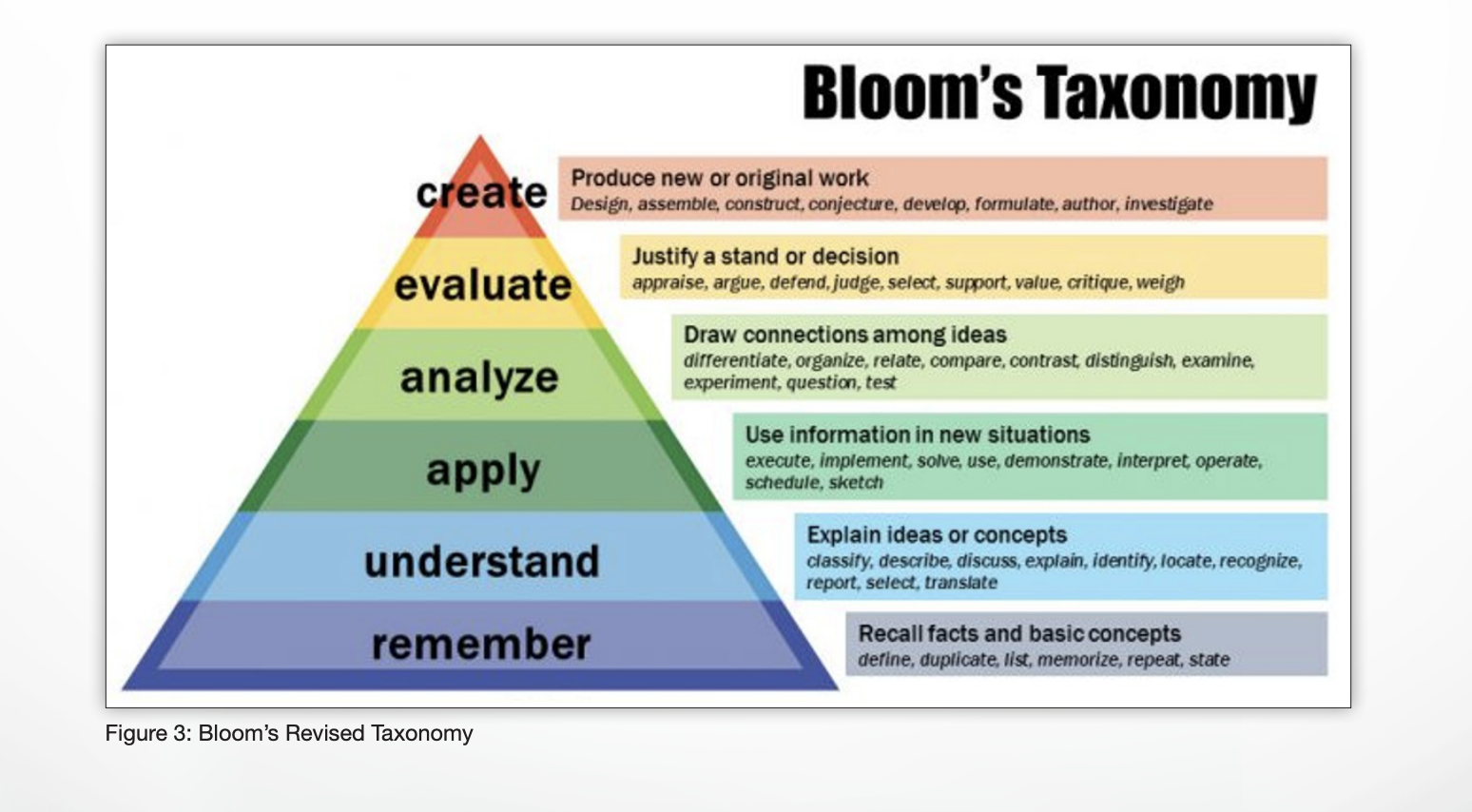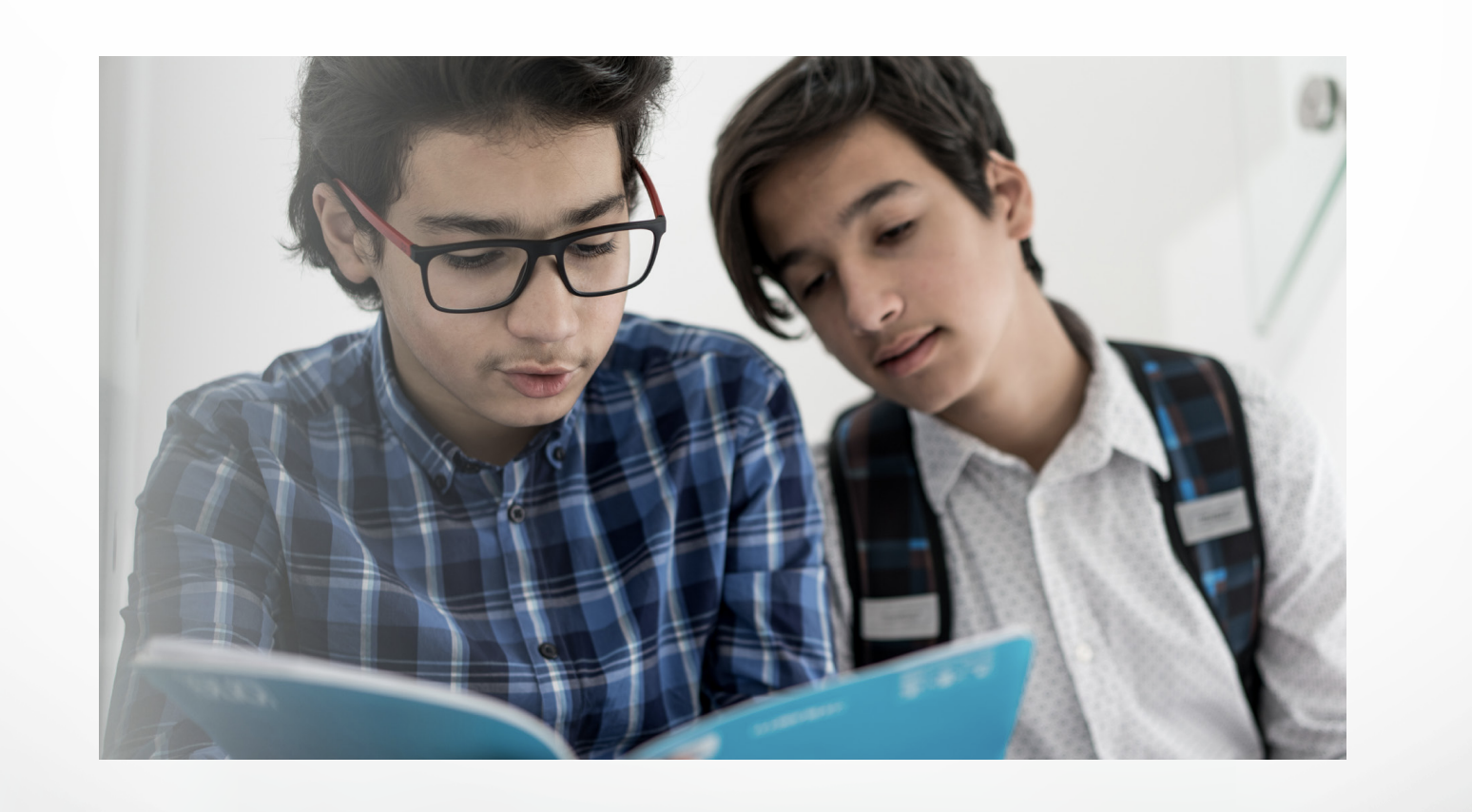The goals of ELA instruction in middle and high school range from developing basic reading comprehension and writing skills to reading and writing critically and analytically. National standards for middle and high school ELA include objectives targeting lower-level skills like explicit text comprehension (e.g., “Cite textual evidence to support analysis of what the text says explicitly as well as inferences drawn from the text”) as well as higher-order skills, such as evaluation of the structure, quality, and veracity of information in a text (e.g., “Delineate and evaluate the argument and specific claims in a text, assessing whether the reasoning is valid and the evidence is relevant and sufficient; identify false statements and fallacious reasoning”) (National Governors Association Center for Best Practices & Council of Chief State School Officers, 2010).
To help educators classify wide-ranging educational objectives for instruction and assessment of learning, educational psychologist Benjamin Bloom developed a hierarchical taxonomy of cognitive processes that range from simple to complex (Bloom, 1956). While the original taxonomy contained categories like “knowledge” and “comprehension,” the taxonomy was updated in 2001 with categories like “remember” and “understand” that better capture the dynamic nature of these cognitive processes (Anderson & Krathwohl, 2001). The revised taxonomy is shown in Figure 3.

The lower levels of Bloom’s taxonomy focus on the simpler processes of remembering and understanding; the middle levels build on these basics with application of knowledge and skills to new contexts and analysis of structures and connections between concepts; and the higher levels include metacognitive skills like evaluating and critiquing information and its presentation as well the creation of one’s own works. Literacy instruction is most effective when skills are developed explicitly, systematically, and cumulatively, from simple to complex, connecting new skills to what was previously learned (Cowen, 2022). Building curriculum around these hierarchical levels clarifies the goals of learning for teachers and students and provides a developmentally appropriate pathway to acquiring increasingly higher levels of skills and knowledge.
Close reading is an instructional approach that scaffolds students’ ability to engage with text in increasingly complex ways, supporting systematic development of cognitive skills. According to Brown and Kappes (2012), close reading “involves an investigation of a short piece of text, with multiple readings done over multiple instructional lessons. Through text-based questions and discussion, students are guided to deeply analyze and appreciate various aspects of the text, such as key vocabulary and how its meaning is shaped by context; attention to form, tone, imagery and/or rhetorical devices; the significance of word choice and syntax; and the discovery of different levels of meaning as passages are read multiple times” (p. 2). Studies of close reading in middle and high school have found that repeated reading of complex, grade-level texts; use of a gradual release of responsibility instructional framework; annotating text while reading; responding to text-dependent questions; and discussion of the text have positive impacts on reading comprehension (Fisher, 2014; Fisher, Frey, & Hattie, 2016; Paddle & Woolett, 2020; Janus, 2017).





